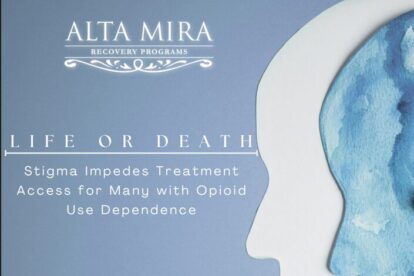Chronic Relapse Prevention and the Value of Long-Term Addiction Treatment

Chronic relapse prevention often requires long-term treatment to offer renewed hope of recovery. By understanding what the evidence tells us regarding treatment duration, the impact of detox on diagnosis, the purpose of treatment, and the value of continuing care, you can move toward getting the care you need to find lasting freedom from addiction.
Maia Szalavitz still has scars. For 30 years they have marked her body, created by endless injections of heroin and cocaine in the 1980s when she was attending Columbia University. “I kept using, even after I was suspended from school, after I overdosed,” she writes. As Maia teetered on the brink of self-destruction, her parents were left heartbroken.
“They couldn’t understand what had happened to their ‘gifted’ child who had always excelled academically. They kept hoping I would somehow just stop, even though every time I tried to quit, I relapsed within months. [But] for me, heroin provided a sense of comfort, safety, and love I couldn’t get from other people. Once I’d experience the relief heroin gave me, I felt as though I couldn’t survive without it.”
Even when she began to recognize that drugs were destroying her, she kept going back.
Maia’s experience with chronic relapse is a familiar tale to many struggling with addiction. Although, for some, short-lived relapse can be a natural part of recovery, for chronic relapsers it goes beyond being an expected step in the healing process. Instead, abstinence and relapse form a vicious cycle that chips away at your hope each time you return to using. This may be especially true if you relapse despite participating in formal addiction treatment; if treatment fails you (or you fail treatment), why keep trying?
But relapse does not mean failure. Rather, relapse indicates that you have not yet participated in the type of care you need to truly free yourself from drugs. Often, one of the key pieces missing from treatment attempts is duration; for people who have experienced chronic relapse, short-term addiction treatment may simply not provide you with the opportunity to recover in a sustainable way because chronic relapse prevention requires long-term treatment.
Treatment Duration: What the Evidence Tells Us
Over the past four decades, we have made tremendous strides in how we understand and treat drug addiction. Once considered a failure of character, we now know that addiction is a complex but treatable disease of the brain. While it was once believed that addicts need to hit rock bottom before summoning the will to recover, we now know that early intervention leads to better outcomes. And while 30-day stays were once considered the standard, we now know that people struggling with addiction, particularly chronic relapsers, achieve the best results with long-term treatment.
According to the National Institute on Drug Abuse (NIDA), duration of care is, in fact, one of the single biggest predictors of treatment outcomes:
Remaining in treatment for an adequate period of time is critical. Research indicates that most addicted individuals need at least 3 months in treatment to significantly reduce or stop their drug use and that the best outcomes occur with longer durations of treatment.
While there is no set definition of what “longer duration of treatment” means, researchers believe that 90 days is the minimum duration needed to minimize the risk of relapse. According to the Drug Abuse Treatment Outcomes Studies, “Those who dropped out of treatment before 90 days had relapse rates similar to those who stayed in treatment for only a day or two.” However, past the 90-day mark, “relapse rates dropped steadily the longer a person stayed in treatment.” Meanwhile, a UCLA study “found that those in treatment for 90 days had significantly lower relapse rates than [those] in programs of 21 days.” In fact, all available evidence supports the value of long-term treatment both for addicts in general and for those experiencing chronic relapse in particular.
The Impact of Detox
One of the reasons longer duration of care may lead to better outcomes is the role detox plays in the identification of client needs. Detoxing from any substances puts the brain through a stressful process of re-organization as it attempts to achieve equilibrium in the absence of substances of abuse. This leads to a host of withdrawal symptoms, both visible and invisible, which can cause disturbances in emotion, thought, and behavior. While medications are available to minimize withdrawal symptomsfrom certain drugs, it still takes time to achieve a state of stability once drug use has ceased.
Successful addiction treatment programs are personalized and designed for your individual needs. The volatility of the detox period can interfere with the psychological assessment process necessary to identify those needs. As such, it is vital that assessment happens over an extended period of time in order to minimize interference of withdrawal and allow for accurate assessment. This is particularly important in the presence of a co-occurring mental health disorder, the symptoms of which may be masked or mimicked by drug use or withdrawal. Because addiction and co-occurring mental health disorders must be treated simultaneously for the best outcomes, diagnostic clarity is imperative when designing effective treatment plans, and this clarity can only be achieved if you are able to participate in the diagnostic process without the influence of drugs or withdrawal.
The Purpose of Treatment
Drug addiction has primed the brain to seek out and compulsively use drugs in order to maintain its state of equilibrium. By activating the possibilities of neuroplasticity, the primary purpose of addiction treatment is to teach you the skills you need to abstain from drug use by replacing maladaptive patterns with new, healthy thoughts and behaviors. This must happen through insight-oriented, cognitive, and behavioral interventions that allow you to identify the root causes of your use, recognize triggers, cope with cravings, and learn how to deal with distress without using.
This process takes time; unlearning addiction is a serious endeavor that requires dedication and practice as you absorb and integrate new learning and ways of being. Linda Onken, chief of NIDA’s behavioral and integrative treatment branch, says:
The more you have a treatment that can help you become continuously abstinent, the better you do. You have to figure out how to be abstinent. You still have cravings. You still have friends offering you drugs. You have to figure out ways not to use. The longer you are able to do that, the more you are developing the skills to help you stay abstinent.
This is particularly true if you have experienced chronic relapse and question whether it is even possible to create a life without using; you need extra time not only to do the work of recovery, but also to believe that such work is possible.
However, the purpose of addiction treatment is not simply to get you off drugs in the immediate term. Rather, addiction treatment must seek to “return people to productive functioning in the family, workplace, and community.” In other words, treatment must not only teach you how to stop using drugs but also reconnect you to the larger world. This is vital in part because it allows you to create what Carl Hart, a neuroscientist at Columbia University, calls “competing reinforcers”—valuable alternatives to drugs. Not only can these competing reinforcers provide the experiences that many find attractive in drug use—joy, belonging, comfort—but they can also serve as motivation to resist drug use; they give you concrete reasons to not use. For people struggling with chronic relapse, long-term treatment gives you more time to imagine and create a life without drugs, one in which you can nourish yourself and your sobriety while expanding your capacity for love and giving you renewed purpose.
Integrated Treatment for Alcoholism & Co‑Occurring Disorders
The Value of Continuing Care for Chronic Relapse Prevention
Finding a residential addiction treatment program that offers 90+ day stays and tailors the duration of care to your specific needs is vital for effective chronic relapse prevention. These programs give you the support and tools you need to engage in true and sustainable healing that can last you a lifetime. However, residential treatment itself is only the first step.
Addiction is a chronic illness, one that must be managed throughout the course of your life. As such, it is vital that the rehab center you select has the resources to create a comprehensive continuing care program that allows you to step down from residential treatment into less intensive forms of care. This may include Intensive Outpatient Programs, sober living environments, or peer support groups. If you live near the treatment facility, choosing continuing care options run by your treatment facility can be the best way to seamlessly integrate into the next phase of your recovery. If you live too far to participate in on-site programming, your clinical team should work with you to connect you to treatment providers and groups in your area to ensure you have the support you need to successfully participate in ongoing healing.
Chronic relapse can compound the pain of addiction. Each time you relapse you may feel—like Maia did—that recovery is slipping further and further away, closing the door to recovery. But Maia eventually recovered, and with the right kind and duration of treatment, you too can begin to free yourself from the grip of addiction. Long-term treatment gives you the time and space you need to truly heal and create the future you want for yourself.
Alta Mira offers a comprehensive suite of treatment programs for people struggling with addiction as well as co-occurring mental health disorders and process addictions. Contact us to learn more about our innovative programming and how we can help you or your loved one start the journey toward recovery.






